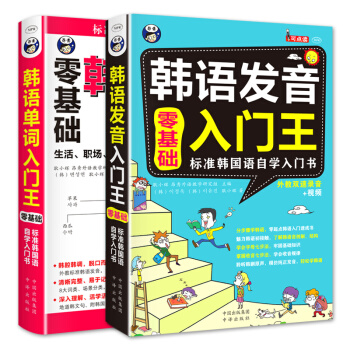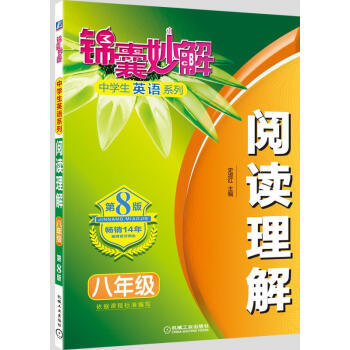![中国历史故事(英文版) [Classical Stories of China Series: History Stories]](https://pic.tinynews.org/10848706/58ce6924N9f13f1f0.jpg)

具体描述
内容简介
本丛书着重选择在中国流传、广大读者喜闻乐见的经典故事,这些故事不仅展现智慧、品格和灵感,而且有着一定的文学价值。相信国外读者朋友尤其是青少年朋友,在这些美丽故事的感染下,一定会更加了解和热爱中国传统文化。小32开,四色印刷,图文并茂。
Chinese classic stories have inherited and passed on the abundant historic treasury of the Chinese nation that has been accumulated over several thousand years, mirroring the politics, military affairs, culture, folk customs, prevailing moral practices, ideals and interests of ancient China. Through those stories, people can gain an understanding of China's long history and achieve an insight into the profound historical origins of Chinese culture.We have identified stories from the vast number of Chinese classic stories, and complied them into this collection. All stories are illustrated in concise words and expressions, and vivid pictures, which will help the process of reading enjoyable. The series of Classic Stories of China comprises nine books: Scenic Spots Stories, History Stories, Myths Stories, Wisdom Stories, Folk Customs Stories, Ancient Fables, Folk Tales, Idiom Stories, Drama Stories. May those books be your good teacher and helpful friends in learning Chinese culture.
内页插图
目录
CONTENTS
Xia Dynasty King Jie Brings About the Collapse of His Dynasty
King Zhou’s Despotic Rule
Grand Duke Jiang Taigong Does Some Fishing
Fooled by the Lighting of the Beacon Fire
Confucius Travels to Various States
Emperor Qin Shi Huang
The Songs of Chu Used against the Soldiers of Chu
Zhang Qian’s Diplomatic Mission to the Western Regions
Sima Qian Writes ‘The Records of the Grand Historian’
Zhaojun Departs for the Frontier
Cai Lun Makes Paper
Liu Bei Pays Three Visits to Sleeping Dragon Ridge
Emperor Yang of the Sui Dynasty Initiates the Digging of the Grand Canal
The Incident at Xuanwu Gate
Songtsan Gampo and Princess Wencheng
Empress Wu Zetian
The An-Shi Rebellion and the Mutiny at Mawei
Acclaimed Emperor When Hungover and Consolidating Power Using Wine
Li Yu Loses His Kingdom
Yue Fei and the Yue Army
Zhu Yuanzhang, an Emperor from Humble Origin
Zheng He’s Voyages
Nurhaci Founds the Later Jin Dynasty
Zheng Chenggong Reoccupies Taiwan
Cao Xueqin and ‘A Dream of the Red Mansions’
Humen Opium Destruction
Burning of the Old Summer Palace
Zuo Zongtang Recovers Xinjiang
Reform Movement of 1898
The Revolution of 1911
精彩书摘
Li Yu Loses His Kingdom
After the fall of the Tang Dynasty in 907, Five dynasties - the Later Liang (907-923), Later Tang (923-936), Later Jin (936-947), Later Han (947-951 ) and Later Zhou (951-960) - quickly succeeded one another in the north, and ten independent states - Wu, Wuyue, Min, Chu, Southern Han, Former Shu, Later Shu, Jingnan, Southern Tang and Northern Han - were established, mainly in the south.
The Southern Tang, one of the Ten Kingdoms, was founded in 937. The capital was located in Jinling (present-day Nanjing in Jiangsu Province). The state was named Tang (history would refer to it as the Southern Tang). The Southern Tang was conquered in 975 by the Northern Song. It was ruled by three emperors and lasted a total of 39 years.
Li Yu (937-978), the last ruler of the Southern Tang ascended the throne in 961. He is historically known as Li Houzhu (literally meaning the last lord of the Southern Tang).
This fertile land was large and prosperous compared to the other Ten States of that period. However, the three generations of emperors were so mediocre that they wasted all their natural advantages.
Li Yu was a very peculiar monarch. He was idiotic in terms of politics, but an excellent ruler in terms of the arts. He was skilled in calligraphy, music, painting, and poetry, especially the ci form. He has been called the “first true master” of the ci form in the history of Chinese poetry.
After founding the Song Dynasty, Zhao Kuangyin launched successive military expeditions against the neighboring kingdoms. Several small states were easily conquered, so Li Yu began to panic. His first plan was to pay large tribute to the Song court so as to maintain his power. Then he wrote a letter to the Song emperor, saying that he was willing to discard the title of “Southern Tang” and to term himself “lord of the regions south of the Yangtze River.” However, his proposals did nothing to change Zhao Kuangyin’s determination to unify all China under the Song banner.
In 974, Song Emperor Taizu Zhao Kuangyin sent 100,000 troops to attack the Southern Tang by water and land. Arriving at the banks of the Yangtze River, the Song Dynasty armies prepared to cross the river by building a floating bridge in order to attack Jinling. Hearing this news, Li Yu did not believe it, and continued drinking with his ministers.
The Song Dynasty armies crossed the Yangtze River and quickly arrived at the gates of Jinling. At that time Li Yu was chanting sutras and praying with the monks and Taoist priests in the palace. On the second day, he went up to the gate tower to make his rounds. Immediately he saw the banners of the Song Dynasty armies all around his capital. He immediately sent a special envoy to the capital of the Song Dynasty to sue for peace.
The peace talk failed and the two armies fought. The Southern Tang army was annihalated. Before the Song army could conquer his capital, Li Yu piled up a lot of straw in the palace. He planned to set fire to it and take his own life, but in the end he couldn’t go through with it. He was taken captive by the Song Dynasty armies. The Southern Tang state ceased to be.
Li Yu was marched off to the capital of the Song Dynasty and was made the Marquess of Wei Ming (literally, the Marquess of Disobeyed Edicts) by Song Emperor Taizu.
Li Yu became a prisoner. However, his best-known poems were composed during the years after the Song formally ended his reign in 975. Li’s works from this period dwell on his lament for his lost kingdom and the pleasure it had brought him.
Song Emperor Taizu Zhao Kuangyin passed away in 976. Li Yu was poisoned by the Song emperor Taizong Zhao Jiong (namely Zhao Kuangyi) in 977.
前言/序言
Preface
China has written history of about 5,000 years. “Chinese history” here refers to the part of the Chinese history form the Xia Dynasty in 2070 BC until the Revolution of 1911 that overthrew the Qing Dynasty (1644-1911), China’s last feudal dynasty.
During the prolonged period of time, the Chinese created a splendid civilization, and Chinese achievements made during the period in socio-economic development exerted great influence on the world as a whole.
The long history has given birth to many historical figures and stories related to them. Many Chinese idioms, slangs and sayings are rooted in them. They become the core of China’s ancient civilization, and helped enrich the Chinese language, ideology and the way the Chinese behave.
Stories taken in the book are few in number, but are expected to be good enough to help readers learn more of China.
用户评价
我最近开始系统性地学习英语,希望能找到一些既能提升词汇量,又能接触到有趣文化内容的读物。这本书的英文版本恰好吸引了我。我观察了一下目录结构,感觉它似乎采取了一种比较灵活的编年史或主题式叙事,而非那种严格按照时间线索推进的教科书模式。这种叙事方法对于非专业读者来说是非常友好的,它能让你在不同的历史片段间自由切换,避免陷入长篇大论的疲劳感。更重要的是,我非常好奇它如何处理那些跨越千年的经典人物形象的翻译和解读。比如,如何用地道的英文去描绘“诸葛亮的鞠躬尽瘁”或者“苏东坡的旷达与悲凉”?这种语言转换的难度极高,需要译者具备深厚的双语功底和文化敏感度。我希望这本书的英文表述是流畅、自然,甚至带有一点文学性的,而不是那种生硬的、直译过来的“中式英语”。如果它能让一个从未接触过中国历史的英语母语者也能体会到其中蕴含的情感张力,那它就成功了。
评分这部《中国历史故事(英文版)》的装帧设计真是一绝,封面那种水墨晕染的质感,一下子就把人拉回了那个古老的东方世界。内页的纸张选择也十分考究,摸上去很有分量感,油墨的印刷清晰度极高,即便是那些复杂的古代官职名称或地理方位,也能看得一清二楚。我尤其欣赏它在排版上所下的功夫,字体大小适中,段落间距合理,阅读起来毫不费力。虽然我还没深入到故事内容,但光是翻阅这本书的物理体验,就已算是一种享受。它不像有些历史读物那样板着面孔,而是带着一种对艺术的敬畏感来呈现历史的载体。我期待它在内容上也能达到这种高水准,毕竟好的故事需要一个同样体面的“舞台”来展现。如果内容真的如封面所预示的这般精美,这本书完全有资格摆在我书架最显眼的位置,作为一件兼具阅读与收藏价值的艺术品。它成功地传达了一种信息:阅读中国历史,可以是一件非常优雅的事情。
评分作为一名对东方哲学和传统文化有浓厚兴趣的学习者,我选购这本书时,最看重的是它对历史叙事角度的拿捏。我希望它能超越单纯的年代罗列和枯燥的事件记录,而是能挖掘出那些深刻影响了中华文明进程的思维模式和价值取<bos>。比如,在讲述某个朝代的兴衰时,书中是否能够巧妙地穿插介绍当时文人士大夫阶层所遵循的“士”的精神?在描述重大战役的背景时,是否能触及到儒家“仁义”思想与实际军事策略之间的张力?我期待它能提供一个有深度的解读框架,而不是仅仅停留在“谁打败了谁”的表层叙事。如果它能用英文清晰地阐释清楚“天命观”是如何影响古代君权合法性的,那才算真正抓住了中国历史的精髓。坦白说,很多西方视角下的中国历史解读常常会忽略这些微妙的文化内核,所以这本书如果能在这方面有所建树,那它的价值就不可估量了。
评分这本书的定价相对较高,这让我对它的附加值产生了更高的期待。我注意到书名中带有“系列”的字样,这暗示着出版方可能有一个长远的规划,试图构建一个完整的中国历史故事英文阅读体系。我非常关心这个系列在学术严谨性与大众可读性之间的平衡点。出版方是否咨询了相关的历史学专家进行校对?注释体系是否完善?如果书中引用了某些史料,是否提供了清晰的来源标注?虽然我是一个普通读者,不需要过于详尽的脚注,但对于一些关键概念或历史典故,清晰的背景说明是必不可少的,这能确保读者不会因为缺乏上下文知识而产生误解。一个优质的系列丛书,其价值不仅在于单本书的质量,更在于它所构建的知识体系的完整性和可靠性。我希望这本作为开篇之作,能展现出足够的专业水准,让我有信心追随这个系列继续深入探索中国的历史长河。
评分我对古代的社会生活场景特别感兴趣,这往往是历史书中最容易被忽略,却也最能体现时代特色的部分。我翻阅了几页试读内容,希望能看到一些关于普通百姓日常生活的描摹。例如,在唐代,一个长安城的商人是如何组织他的贸易路线的?宋朝市民阶层在瓦舍勾栏里观看的“说书”内容究竟是些什么?明代江南士绅的园林生活是如何体现他们对“雅”的追求的?我希望这本书不仅仅是讲述帝王将相的宏大叙事,而是能通过一些生动的“微历史”侧面,将历史的温度还原出来。如果它能详细描绘出古代节日习俗的细节,或者某一特定时期(比如春秋战国时期百家争鸣的氛围下)知识分子群体是如何交流和辩论的,那无疑会大大增加阅读的乐趣和代入感。历史不应该只是冷冰冰的记录,它应该是一幅幅可以“走进去”的生活画卷。
评分买给外籍人士看的,改天给他寄回去
评分内容简洁
评分东西确实很好!!!!
评分人的一生中之所以能不断提高,与其始终如一的学习是分不开的,所谓活到老学到老,庄子说,吾生也有涯,而知无涯。知识是没有穷尽的,坚持学习让人始终处于不败之地。反之,没有知识的不断补充和积累,人便会落后于时代。歌德说过,谁落后于时代,就将承受那个时代所有的痛苦。特别是在现今知识爆炸的年代里,不能接触新的知识便会被时代所淘汰。 对于我们学习新的知识来面对新的挑战,更是不可忽视的。它能提供我们精神动力和智力支持。正如高尔基所说,没有任何力量比知识更强大,用知识武装起来的人是不可战胜的。 一、读书可以让我们站在更高的高度来看问题,从而少犯错误,少走弯路。 牛顿说过他能取得如此巨大的成就,是因为站在巨人的肩上看得更远,科学巨人的虚怀若谷自然值得我们学习,我们还可以从中学到更有价值的东西。书籍对于整个人类的关系,好比记忆对于个人的关系。书籍记录了人类的历史,记录了所有的新发现,记载了古今历代所积累的知识和经验。只有认真的学习前人的经验和理论,才能在一个更高的高度上来看问题,不再犯同样的错误,并有一个较高的起点。书本是前人智慧的结晶,是他们的研究成果和经验的体现,通过对他们的学习,发现对自己有用的东西。在前人经验的基础上来不断的完善自己,大大的促进了个人的成长。在很大程度上可以这样说,人类社会的延续和发展,也是这样来实现的。试想,如果每个人都是从头开始,那么,无论多么伟大的人,做出多么大的贡献,人类社会最终还是在原地踏步。由此更可见读书的重要性了。 二、读书开阔人的视野 书本中的知识可谓是包罗万象,他能拓宽我们的视野,让我们的知识更全面。从而能够更深刻的思考问题,事物都是广泛联系的,现代的许多实践都证明了各种信息的相关性,如果只知道一个领域的信息,必然会有碍于自身的发展,掌握更多方面的知识,才能使未来的不确定风险降至最低。就像做股票的人都应了解当今的政治经济形势,以便能更好的分析股票走势一样。研究物理学的学者们都要有一定的化学和其他基础,才能有所成就。记得一位诺贝尔获奖者在复旦做讲演时就曾说过,现代科学已没有明显的界限,你必须对相关的科学都有所了解才行。在这方面,伟大的导师恩格斯就是一位广泛学习的典范,他虽然只上过中学,但由于他发奋读书,十九岁时就能用十二种语言说话和写文章,在参加工作实践后,他也没有间断过学习和研究,从而被马克斯称为一部真正的百科全书。广博渊深的知识,对恩格斯指导国际共产主义运动和准确的传播科学共产主义理论有很大的帮助。 从它的经历中,我们可以体会到知识的力量,更能体会到书本做为人类掌握知识力量的有力武器的巨大作用。 三、读书有助于我们树立正确的人生观 人生来无善亦无恶,关键是正确的引导。在人的成长过程中,有一位良师益友就能起到很积极的作用,书本就是这样的一位。一本好书就如一个好的导师,它能教你如何做人,做一个于己于社会都有用的人。书籍能安慰我们的心灵,使我们摆脱悲哀和痛苦的羁绊;书籍可以使枯燥乏味的岁月化为令人愉快的时光。书必将各种信念注入我们的脑海,使我们充满崇高的欢乐和思想,从而使我们入神忘情,灵魂升华。[BJTJ],[NRJJ],[ZZ]写的书确实值得一读。京东的快递也很给力。
评分孩子喜爱的英语故事书
评分很不错的书,孩子喜欢。
评分好好好好
评分好东西。好东西。好东西。重要事情说三遍。
评分孩子喜爱的英语故事书
相关图书
本站所有内容均为互联网搜索引擎提供的公开搜索信息,本站不存储任何数据与内容,任何内容与数据均与本站无关,如有需要请联系相关搜索引擎包括但不限于百度,google,bing,sogou 等
© 2025 book.idnshop.cc All Rights Reserved. 静思书屋 版权所有


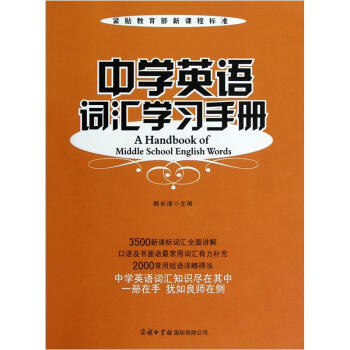


![宝宝喜爱的英语卡片书:童装 颜色 [0-2岁] [English Cards for Children:Clothes and Colours] pdf epub mobi 电子书 下载](https://pic.tinynews.org/11408397/rBEhUlMUH1kIAAAAAAQcCreFYRkAAJXiAADDzAABBwi442.jpg)
![新概念英语(青少版)同步一课一练(2A) [Junior New Concept English] pdf epub mobi 电子书 下载](https://pic.tinynews.org/11416424/5732d32bNa3f9c22e.jpg)
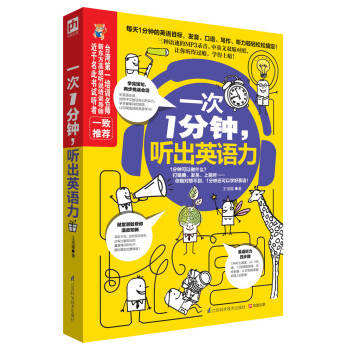
![英语歧义词句详解(英语语法学习必备用书) [A Detailed Explanation of English Ambiguous Expressions] pdf epub mobi 电子书 下载](https://pic.tinynews.org/11561190/544a12f7Naf2fed75.jpg)
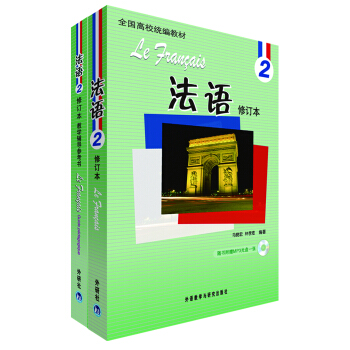
![伟大的思想:葛底斯堡演说(英汉双语) [The Gettysburg Address] pdf epub mobi 电子书 下载](https://pic.tinynews.org/11751818/55e3c351N9451687f.jpg)


![国际汉语教学 汉字教学方法与技巧 [International Chinese Teaching: Methods And Techniques For Teaching Chinese Characters] pdf epub mobi 电子书 下载](https://pic.tinynews.org/11789307/56283755N4d42aebe.jpg)
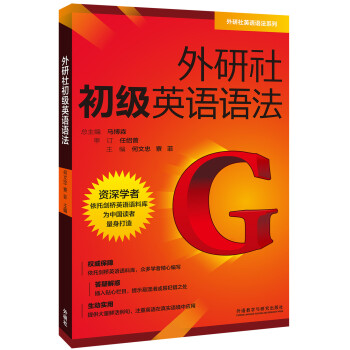

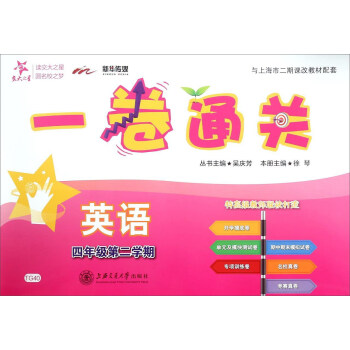
![德语国家国情文化:学生读本(附练习册) [Dreimal Edutsch] pdf epub mobi 电子书 下载](https://pic.tinynews.org/11886651/56fa4bf5Nffdfe381.jpg)
